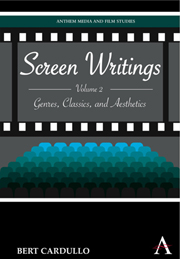Book contents
- Frontmatter
- Contents
- List of Illustrations
- Introduction: The Film of Value
- Part I Film Genres, Film Classics, and Film Aesthetics
- Interlude
- Part II Classification, Re-classification, and Assessment
- 8 Early vs. Later Bergman: Winter Light and Autumn Sonata Revisited
- 9 “Everyone Has His Reasons”: Words, Images, and La grande illusion in the Cinema of Jean Renoir
- 10 A Passage to Tokyo: The Art of Ozu, Remembered
- 11 Through the Looking Glass: The American Art Cinema in an Age of Social Change
- Bibliography of Related Criticism
- Index
- Plate section
11 - Through the Looking Glass: The American Art Cinema in an Age of Social Change
from Part II - Classification, Re-classification, and Assessment
Published online by Cambridge University Press: 05 March 2012
- Frontmatter
- Contents
- List of Illustrations
- Introduction: The Film of Value
- Part I Film Genres, Film Classics, and Film Aesthetics
- Interlude
- Part II Classification, Re-classification, and Assessment
- 8 Early vs. Later Bergman: Winter Light and Autumn Sonata Revisited
- 9 “Everyone Has His Reasons”: Words, Images, and La grande illusion in the Cinema of Jean Renoir
- 10 A Passage to Tokyo: The Art of Ozu, Remembered
- 11 Through the Looking Glass: The American Art Cinema in an Age of Social Change
- Bibliography of Related Criticism
- Index
- Plate section
Summary
By 1970, it's worth reminding ourselves at the outset, film's recognition as an art form had not been in question for some time. Yet film, as it was mostly being made above ground in the United States at that moment, had very little aesthetic identity in the minds of its chief practitioners and enthusiasts, or at any rate its most vocal ones. There are more ironies than one here: unquestionably better, more mature, more salient and thematically sophisticated as many of America's new films had become, superior as a class as they were to the great bulk of American movies for a generation, they caused an excitement, an intensity and vigor of response, much beyond what was then accorded the current theater or new fiction. But this had almost nothing to do with any perennial or universal conceptions of “art” and almost everything to do with political, sociological, and psychological phenomena that are either indifferent or actively hostile to such conceptions.
Let's call the New American Cinema of this period, the late sixties and early seventies, the cinema of make-believe meaning. Changes in the United States connected with sex, race, gender, and class (“women's liberation,” “gay liberation,” birth control, abortion rights, minority rights, opposition to the Vietnam War, the lifting of censorship restrictions) – that is, with anti-authoritarianism directed at the patriarchal “Establishment” – had, inevitably, changed the tone of its film industry.
- Type
- Chapter
- Information
- Screen WritingsGenres, Classics, and Aesthetics, pp. 161 - 172Publisher: Anthem PressPrint publication year: 2010



